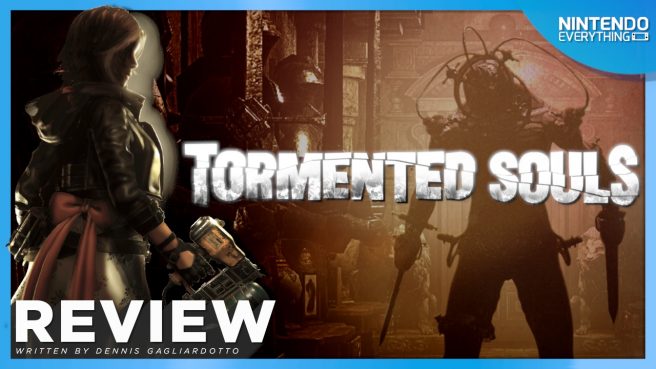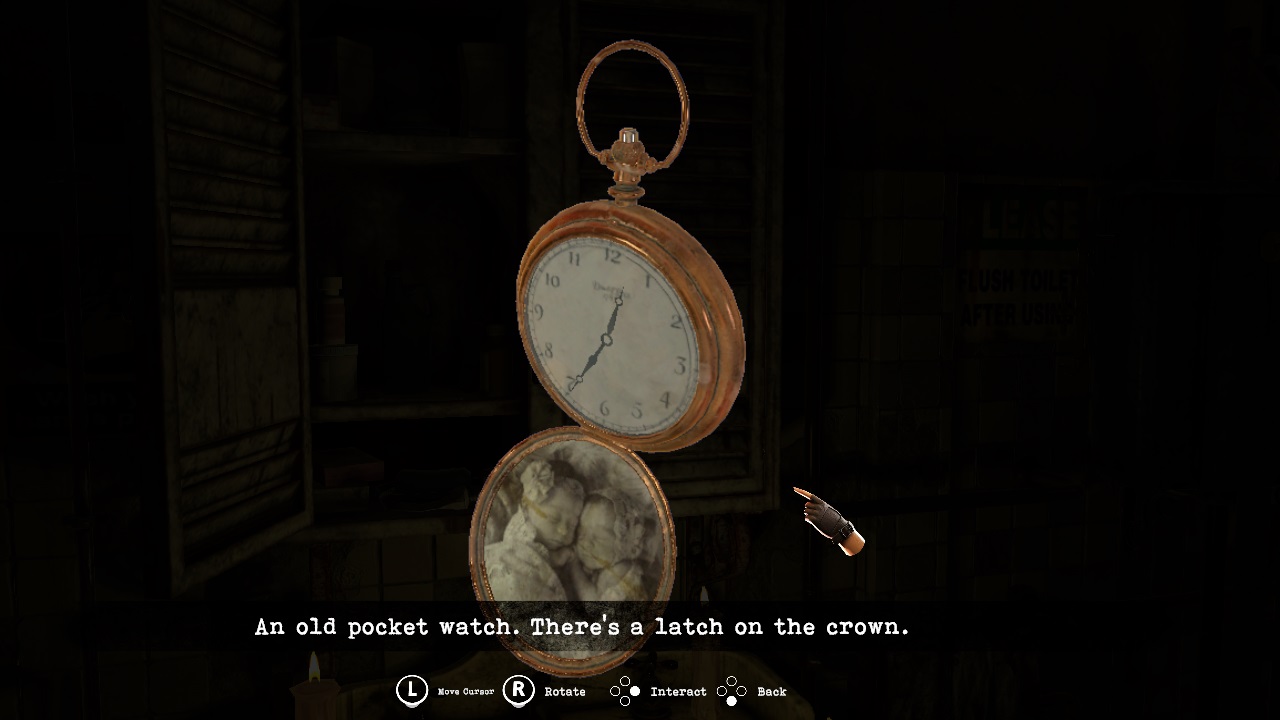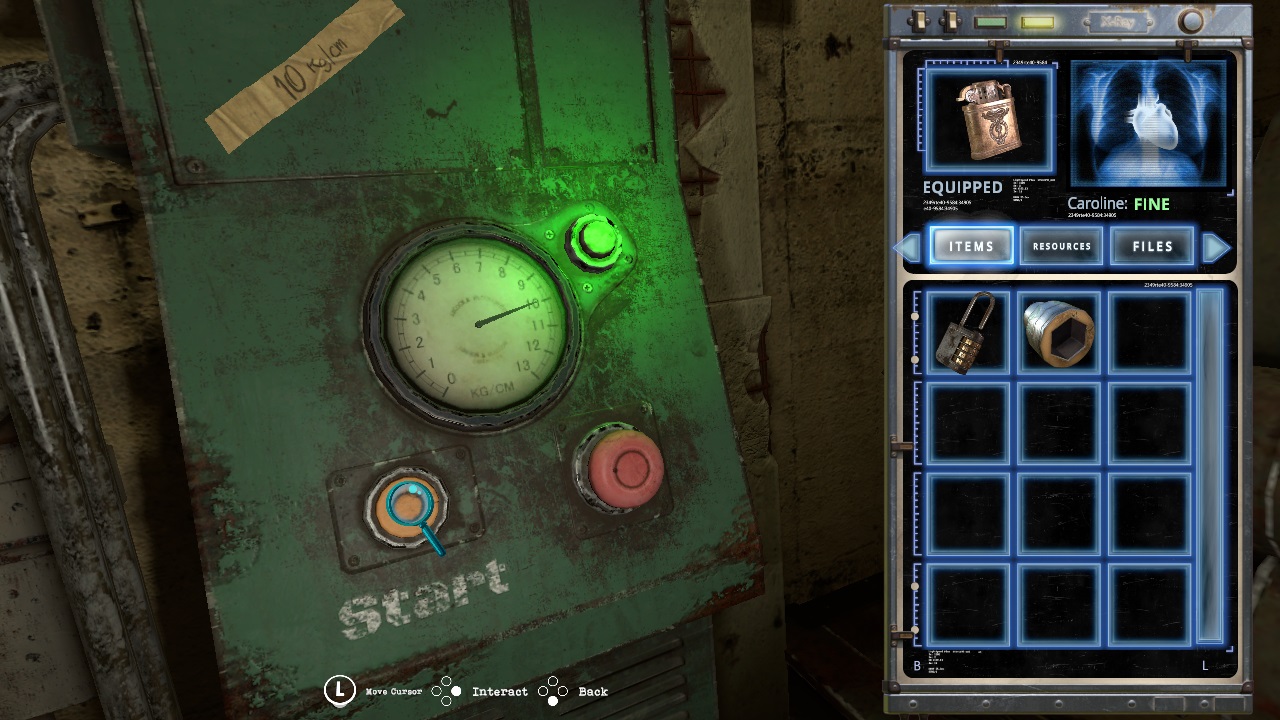[Review] Tormented Souls
System: Switch
Release date: April 14, 2022
Developer: Dual Effect / Abstract Digital
Publisher: PQube
Tormented Souls is next in line in wanting to revisit and recreate some of the classic moments that catapulted the horror genre to where it is today. It’s arguably one of the best attempts in recent memory to do so, with a design that’s clearly made from a place of passion, respect, and immense desire to bring back the likes of fixed camera angles, intense resource management, and a deeply detailed playground where immersion is absolutely key. Though Tormented Souls’ heart is in a good place, however, there’s no denying that it stumbles quite a bit, and the Switch version of the game isn’t also without sacrifice.
Tormented Souls puts players into the shoes of Caroline Walker, who suddenly wakes up one day naked in a tub and hooked up to a respirator as if she’s being preserved for some sort of experiment, all while looking for the mysterious disappearance of twin girls who have caught her interest. Lost, confused, and unaware of her surroundings, she must explore, uncover, and survive as she makes her way through a mysterious mansion and ward that’s riddled with grotesque beings and supernatural forces that will do anything to make your life a living nightmare.
Through your fight for survival, however, tons of areas will be closed off or require some sort of understanding or procedure to move forward, so puzzles will play a large part of Tormented Souls as you look for a way out and uncover the mysteries of the environment and beings around you. Right away the locked bathroom you’re in is a great introduction to the mechanics of the game and how to navigate menus, make use of the combination system, reading your environment for answers to puzzles (like lock combinations), and more, though it’ll definitely feel familiar – and in some cases completely natural – to those that grew up with these sorts of titles in the late 90s and early 2000s, even down to the sound effects, design, and prompts of each item, note, or interaction done in your inventory. Nothing Tormented Souls does will present itself in an immediately noticeable way, so the way the bathroom section in the opening of the game presents all of this in a small but safe environment is cleverly done but still enough of a challenge to get you familiar to how the game will naturally progress without ever explicitly stating what to do or where to go, and having the exploration speak for itself through a plethora of notes placed sporadically that tell the tale of prior events that are clearly twisted and ill-intentioned.
One of my complaints for some of the older survival horror games that tell a story or narrative indirectly through journals and pages is that sometimes the entries can feel a bit long, almost as if reading an actual book. However, just about every note in Tormented Souls is written in a concise manner that doesn’t take up much time at all to read and are very rarely more than two pages long, all of which are usually just a paragraph long per page. It gives more incentive to take in the world around you and get more clarity through the mysterious pages that flood just about every area and room, with an easy way to backtrack and re-read pages you’ve picked up thanks to its simplistic inventory system.
Because of the intense resource and management you’ll encounter in the game courtesy of the general nature of its legacy roots, you’ll obviously be opening up your menus very often to take care of a bulk of tasks to solve puzzles, combine items, reload ammo manually, and switch between items used passively in the environment (like light sources) since there are no real quick menu inputs or wheels to make use of to keep its authenticity of the horror experience its aiming to emulate. While I’m a big fan of those games and continue to revisit them even to this day, the way Tormented Souls makes use of its controls is a slight burden as it very clearly favors a mouse over a stick and directional buttons when going about interacting and navigating through menus and looking at items. There’s an odd mix of bumpers and left and right directional buttons, yet up and down instead scrolls rather than selects the next box under the item currently hovered over, so every time I’ve opened up a menu and inventory, I have to rotate between three different sets of buttons time and time again instead of simply using the d-pad for everything or an intuitive combination of buttons. In a lot of cases Tormented Souls almost embraces too much of the past, and it can cause this sense of frustration that makes an already eerie experience vastly more uncomfortable but ergonomically.
Some aspects have definitely been done to increase the quality-of-life aspect of games like this, however, like light sources not needing to be replenished with fuel, batteries, or the sort and can be left on indefinitely without the need to spend so much time getting sidetracked scouring for resources and worry about depletion, leaving more focus on the tasks at hand and what’s really important. On the flip side, you have a limited and almost impossibly small amount of the tape recorders which serve as the game’s version of ink ribbons and typewriters in Resident Evil, leaving a limited number of saves with no autosaving in tow. That means death could potentially bring you back as far back as an hour depending on what you’ve been doing.
In a game that can take an upwards of 12-15 hours to complete by normal means, it can make that time stretch and almost feel elongated into JRPG territory, which is just unnecessary for horror games as eventually you’d like the nightmare to end – literally. I would have much preferred a system where if the save points themselves are hard to find alongside the actual tapes needed to record said saves, if the tapes could be used to record your progress in repeatedly (or at least a set number of times) instead of a disposable one-and-done save system with each you find, making even saving become part of your resource management throughout your playthrough. It’d be one thing if you were still able to keep items you’ve found and being brought back to your last save location, but everything is essentially wiped if you find yourself in an unfortunate situation – and there will be quite a few of those moments in Tormented Souls. If it wasn’t for my persistence, patience, and undying love for this genre and the classics, there could have been plenty of opportunities for me to give Tormented Souls up. However, there’s an undeniable draw the game also has that kept me wanting to explore more and uncover every possible scenario the game had to offer.
Enemy variety isn’t particularly plentiful, but it never feels particularly overwhelming or underwhelming either. There’s usually enough room to move around and avoid any conflict you want no part of – which is a smart thing to do given the limited number of ammo at your disposal – but there are also many cases where you’ll find yourself in a particularly dark corridor and environment in which you need a light source, but switching to a weapon will take away that light source, and if you’re left in the dark for too long you’ll be sucked away by a supernatural force and immediately die without negotiation. When it becomes hard to see, it definitely increases tension, but there’s enough definition and well thought out design to Tormented Souls’ environments that there should be some sort of way of escaping or circumventing any danger you come close to. There’s technically a way to dodge as well, but much like the games of its time that it’s inspired by, it can be fairly janky and have a lot of recovery time, so I never found it to be that useful a lot of the time especially when it can typically only be triggered in an action pose when aiming, otherwise you’re best left to running away.
Even with a few mishaps that keep the game feeling like a modern version, the intentionally dated nature of Tormented Souls still has a lot to love about it and appreciate, especially if you grew up during the era where tank controls and fixed camera angles were so dominant in the games of that time. There’s a special charm and immersion that comes with the territory of fixed angles as well that the game does so well since you never really have to worry about rotating a camera and can just simply walk, leaving the mind to be a bit clearer and every frame being picture perfect and in full view, so there’s no need to feel a sense of paranoia when it comes to collectibles just because you forgot to rotate a camera behind a desk. Because of this, audio design becomes even more important and your senses for sound become heightened when you start to hear things – even the most subtle of noises – off screen that you’re unsure of, and it’s that notion of the unknown that tends to get under you skin more than anything else. If there’s anything that takes away from Tormented Souls’ otherwise authentic experience, it’s the horrendous voice acing and poor audio mixing of said voices that really tend to take away from the experience, and though so may argue this is also reminiscent of how voice acting was handled at the time, this doesn’t feel intentionally bad and instead just an extremely poor performance by those involved, like a nervous child who would much prefer to be in band than theater.
Tormented Souls overall, despite its difficulty, is a great game that overall feels polished and genuine outside of a few hiccups that tend to frustrate though not necessarily mar the experience. While the Switch version is very clearly gimped visually compared to the rather appealing and clean aesthetic on other platforms, it’s an odd case of it somewhat working to its favor and can be seen as a “Retro Mode” reminiscent of the lower polygon count of the PlayStation 2 and Xbox era of gaming, and most importantly it runs fairly smoothly outside of loading times that tend to overstay their welcome when booting it up and going from area to area. Tormented Souls shows that, yes, there’s still a place for games that play and look like they once did back in the day, though it also proves that we’ve come a long way with technology that some things are also better left off to the past in favor of more quality-of-life aspects that would only increase the comfort and enjoyability of a game and not disrupt it regardless of its survival horror roots. There’s a way to appreciate and honor source material while innovating enough to open itself to new audiences, but Tormented Souls is very much a love letter to the classics and those that want to revisit a time that once was, and may not be suitable for those more accustomed to today’s games unless they want a bit of a history lesson.
The Verdict
Tormented Souls is a fun homage to the classics of the genre that paved the way forward. It wears its inspirations proudly on its sleeve and does so in a way that’s more so nostalgic than it is reminiscent of being a product of its time, providing a modern gateway and portal to the classic era of fixed camera angles and intense resource management where survival horror was truly emphasized behind both of its describers. Though the Switch version by comparison to what it natively looks like is without a doubt a sort of PS2 rendition of the game, this is one of the rare times where the lack of graphical fidelity in an odd way is serviceable, making the experience feel more authentic and aiding in the transportation of the early 2000s era of survival horror games. Tormented Souls is not without fault, but it’s a clearly passionate love letter to the games that created a legacy within the medium, and it’s a solid horror experience through and through even though it’ll certainly be for a set demographic that’s prepared for (or used to) a grueling experience that will not hold your hand nor forgive your mistakes.
Tormented Souls copy provided by the publisher for the purposes of this review.




